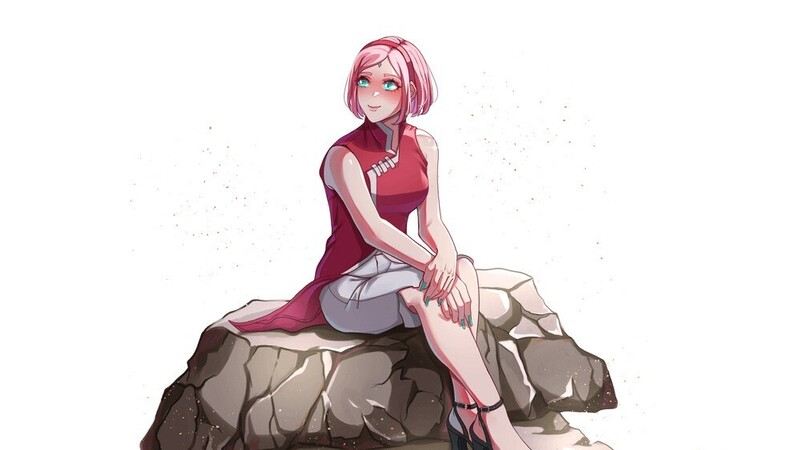Fanart has long been a cherished way for enthusiasts to express their admiration and creativity, and among the vast array of subjects, Sakura stands out as a particularly beloved figure. Whether it’s the iconic Sakura Haruno from Naruto or the charming Sakura Kinomoto from Cardcaptor Sakura, the representation of these characters through fanart is both diverse and profound. This article delves into the intricacies of fanart:c3gew_tvzii= Sakura, offering insights into the creative process, the influence of cultural elements, and the significance of fanart communities in shaping this art form.
The Cultural Impact of Sakura in Anime
The Evolution of Sakura Characters
Sakura as a character archetype has evolved significantly over the years, embodying a range of attributes from strength and determination to gentleness and kindness. This evolution has been mirrored in the fanart community, where artists continuously reimagine and reinterpret these characters. The portrayal of fanart:c3gew_tvzii= Sakura is not just about replicating her appearance; it’s about capturing the essence of her character, the emotions she evokes, and the cultural significance she carries.
Cultural Symbols in Sakura Fanart
Fanart often incorporates cultural symbols that resonate with the character’s origins. For instance, in Sakura Haruno fanart, elements such as the cherry blossom—a symbol of transience and beauty in Japanese culture—are frequently used to enhance the thematic depth of the artwork. Similarly, Sakura Kinomoto fanart might feature magical elements that align with her role as a young girl wielding magical powers. These cultural symbols not only enrich the visual appeal but also create a deeper connection with the audience who share an understanding of these cultural references.
The Creative Process Behind Sakura Fanart
Inspiration and Conceptualization
Creating Sakura fanart begins with a spark of inspiration, often drawn from the character’s most memorable moments in anime or manga. Artists may also be influenced by personal interpretations of Sakura’s personality, leading to unique and varied depictions. The conceptualization stage involves brainstorming ideas, sketching rough drafts, and deciding on the overall theme and mood of the artwork.
Techniques and Styles in Sakura Fanart
The techniques and styles employed in Sakura fanart are as diverse as the artists themselves. Some opt for traditional methods such as pencil sketching for watercolor painting, while others utilize digital tools to create vivid, high-resolution images. The choice of medium and style—be it realism, abstract, or a blend of both—plays a crucial role in how the character is perceived. For example, a realistic portrayal might emphasize the character’s strength and maturity, whereas a more abstract approach could highlight her whimsical and magical qualities.s
Color Schemes and Visual Themes
Color is a powerful tool in fanart, used to evoke specific emotions and highlight key aspects of the character. In fanart:c3gew_tvzii= Sakura, the use of pink hues is prevalent, symbolizing both the cherry blossom and the character’s namesake. However, artists often experiment with different color palettes to convey various moods or to reimagine Sakura in different contexts. For example, a darker color scheme might be used to portray a more intense, battle-hardened version of Sakura, while pastel tones could emphasize her innocence and purity.
The Role of Fanart Communities
Fostering Creativity and Collaboration
Fanart communities play a pivotal role in the development and dissemination of fanart:c3gew_tvzii= Sakura. Platforms like DeviantArt, Pixiv, and social media channels provide artists with a space to showcase their work, receive feedback, and engage with other fans. These communities often organize events such as fan art contests or themed challenges, which not only foster creativity but also encourage collaboration among artists. This collaborative spirit is vital in pushing the boundaries of creativity, leading to the continuous evolution of fanart styles and techniques.
Support and Critique within the Community
Within these communities, artists can find a supportive network that offers constructive critique and encouragement. This environment is essential for artists, particularly those who are just starting, as it helps them hone their skills and gain confidence in their work. The feedback loop within these communities is also instrumental in maintaining high standards of quality, as artists strive to improve and produce better work with each new piece.
The Future of Sakura Fanart
Innovations in Digital Art
As technology continues to advance, so too does the potential for innovation in Sakura fanart. Digital art tools are becoming increasingly sophisticated, offering artists new ways to express their creativity. From 3D modeling to augmented reality, the possibilities for fanart are expanding, allowing for more immersive and interactive experiences. These innovations are likely to lead to even more dynamic and engaging representations of Sakura, further solidifying her place in the fanart world.
Preserving the Essence of Sakura
Despite these advancements, the core of fanart:c3gew_tvzii= Sakura remains unchanged—celebrating the character and her impact on fans. As artists continue to explore new techniques and styles, it’s important that they also preserve the essence of what makes Sakura so beloved. Whether through traditional or digital mediums, the goal remains the same: to honor the character’s legacy and inspire others through art.
Conclusion
Sakura fanart is a vibrant and dynamic expression of fandom, rooted in deep cultural appreciation and creative innovation. The continued evolution of this art form is a testament to the enduring appeal of Sakura characters and the passion of the fanart community. As we look to the future, it’s clear that fanart:c3gew_tvzii= Sakura will continue to thrive, driven by both technological advancements and a deep respect for the character’s legacy.
